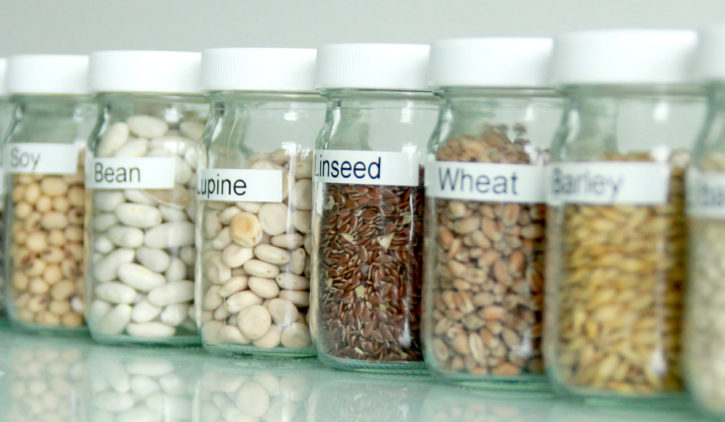
Context
Consumer demand has recently evolved toward higher quality food. Several studies highlight that customer are more and more looking for plant based product with well-being benefits. Soya has, for example, been widely studied since decades for the production of bioactive peptides. On another hand, industrials are giving much more importance to value their by-products. Fractioning those significant quantities of by-product is a potential way to produce added value.
In this context, the production of bioactive peptides is increasing. Potentials applications are manifold: food industry, medicine, cosmetics, pharmacology, agronomy or agrochemistry. Here is a summarized review of major and common steps for the production of bioactive peptides from vegetal protein by biocatalysis.
Vegetal protein extraction
Before protein extraction, steps of oil or mucilage removal are often applied. After dry milling, the flour is spread in water (or solvent) to proceed the protein extraction by solubilisation. Soluble proteins are concentrated and recovered by filtration process or acid precipitation. Purity of the protein extract but also the presence of polyphenols, antinutrients and enzyme inhibitors are key points for enzymatic hydrolysis.
Controlled enzymatic hydrolysis
In the last years, it has been recognized that vegetal proteins provide a rich intake of biologically active peptides. Those bioactive amino acid sequences are often inactive in their parent protein and can be released upon enzymatic hydrolysis. Many commercial proteases have been developed. They are characterized by their catalytic type, cleavage site, origin (animal, vegetal or, bacterial), optimal pH…
Controlled enzymatic hydrolysis aim to reach a degree of hydrolysis (proportion of cleaved peptide bonds in a protein hydrolysate). There are many controlled factors such as enzyme type, enzyme/substrate/water ratio, enzyme activity, temperature, pH, ionic strength… By controlling as much factors as possible the production of bioactive peptides will be standardized.
Fractionation and purification
Generated hydrolysate are generally a mixture of proteins, peptides and low molecular weight molecules. Filtration process (microfiltration, ultrafiltration, nanofiltration) are commonly used to fractionate hydrolysate and to isolate peptides with a wished molecular weight. Other technologies like Partition chromatography or Electrodeposition Ultra Filtration systems (EDUF) allow a fine selection of bioactive peptides according to their physicochemical properties.
Characterization, bioactivity inquiry
Bioactive peptide are characterized by their molecular weight, amino acid sequence, net charge, hydrophobic/hydrophilic balance. Antioxidant, anti-hypertensive, anti-inflammatory, antimicrobial, antidiabetic, anticancer are the most abundant actives.
Bioactivities analysis can be realized in vivo and/or in vitro. In vivo analysis are generally substituted by in vitro analysis coupled with in vitro digestion because of the high cost and resource of in vivo analysis.
Formulation
Potential market for bioactive peptides are human nutrition (food supplement), animal nutrition, cosmetic and pharmaceutic. Diversity of application gives several formulation opportunities (drink, cereal bar, pill, cream…). Hydrolysis of vegetal proteins generates bitter peptide. This bitterness is a key point in the formulation of bioactive peptides.
Bioactive peptides made in IMPROVE
IMPROVE offers a wide range of equipment and expertise that allow to work at lab scale (1 L), micro-pilot scale (10 L) or pilot scale (1000 L). With its expertise in vegetal fractionation, protein extraction and enzymatic hydrolysis, IMPROVE will assist you from the raw material to the bioactive peptides.
